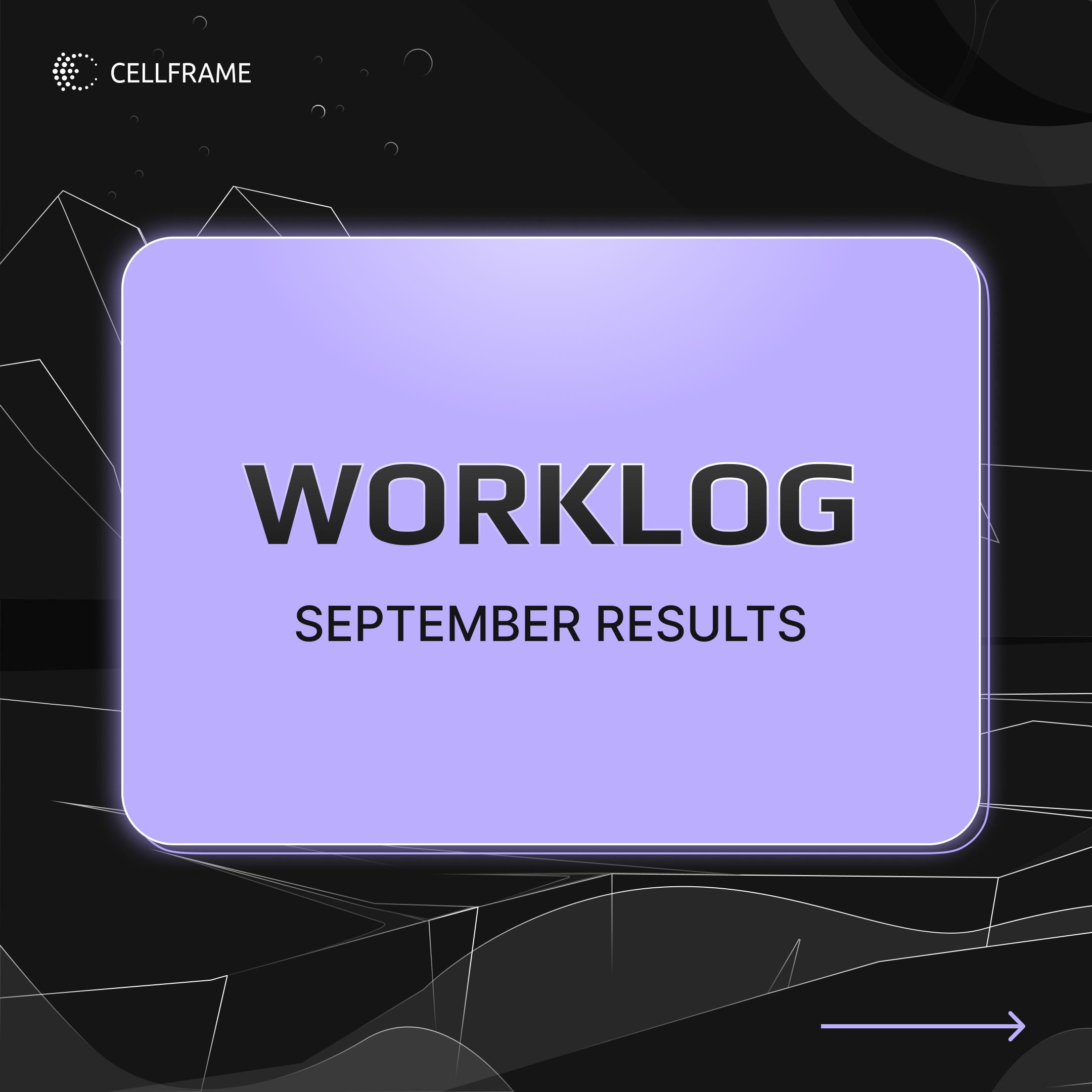Worklog. September results
Category: Development Report

Hello, everyone! We are delighted present the latest issue of our news digest. Herein we'll discuss the progress of development across all our projects and share news from the life of Demlabs. Today, we're going to talk about what was accomplished in September.
Cellframe Staking Website
We are constantly working on improving the functionality of the website https://stake.cellframe.net/. In September, we made several important enhancements:
- Automated the addition of gas fees for staking and unstaking LP tokens of Cellframe.
Why it's important: ConsenSys made significant changes to the MetaMask wallet usage rules, and now, when conducting transactions, the gas price (ETH network fee) needs to be set manually. When these changes came into effect, we started looking for a solution that would be as convenient as possible for our users. This took us some time, but in the end, we found it. Gas fees for staking and unstaking LP tokens on our website are now added automatically, meaning that this process remains unchanged for users.
- The network fees of Cellframe have been included in the calculation when creating a stake.
Now they are taken into account and displayed during the stake transaction formation stage. Additionally, we have implemented a special indicator that shows the progress of this transaction's completion.

Cellframe Dashboard
In September, we completed the implementation of the JSON-RPC protocol used for message exchange between Cellframe Node and Cellframe Dashboard. This improved data transmission quality and node stability.
We removed the ability to create wallets with Bliss and Picnic signatures from the interface. Now, such wallets can only be restored. We recommend that users create wallets with other up-to-date signatures (currently available CRYSTALS-Dilithium, and soon Falcon and SPHINCS+) and transfer their funds there.
We also updated the network status indicator in the application, making it more user-friendly. Now, when the network is off, the indicator is yellow; during synchronization, it flashes green, and when the network is on, it remains static green. Additionally, we fixed several bugs related to service fees and transaction status display.
KelVPN News
The project team updated the design of the website https://kelvpn.com/ and added a new section called "How to Become a KelVPN Provider." Additionally, new payment methods for the VPN service are now available on the website, including Qiwi and Perfect Money.
Furthermore, updates were made to the staking website https://stake.kelvpn.com/. It now supports single staking of KEL tokens.

Bidirectional Bridge
The bidirectional bridge is our next major goal. To achieve this, we have already made some changes to the architecture of our main network. Specifically, we are currently refactoring the Global Data Base (Cellframe network's distributed data storage) and have altered the format of records within it. These changes aim to optimize network synchronization mechanisms.
In addition to improving synchronization, we are also working on enhancing network security. Currently, we are focusing on improving the security of our Python plugins, thereby closing potential attack vectors in the API.
We have also optimized the token emission processes within the network by adding additional checks. In the Cellframe network, internal emissions come in two forms: reward emissions issued by the staking engine and bridge emissions issued by the bridge engine. All emissions are signed by special bridge nodes with the appropriate permissions. However, the issuance of emissions, in theory, could have been conducted by any node before. Now, we have organized this process: we have restricted emission issuance to nodes that have received specific permissions from us. In the near future, this will prevent spam and, when the bidirectional bridge is fully operational, enhance the security of our network.
Recent news
-
AMA with CEO Dmitry Gerasimov: Septembe 7, 2023
12 Sep 2023
-
AMA with CEO Dmitry Gerasimov: July 13, 2023
14 Jul 2023
-
How to buy $CELL?
11 Jul 2023
-
Cellframe Marketing Roadmap
03 Jul 2023
